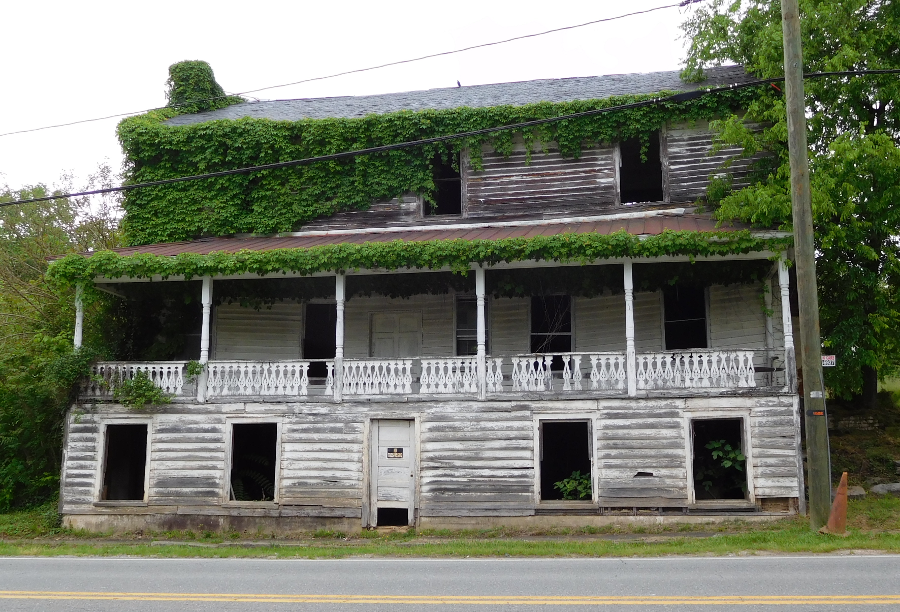
by 2016, the Town of Columbia was clearly in fiscal distress

by 2016, the Town of Columbia was clearly in fiscal distress
Between 1997-2016, three towns in Virginia - Castlewood, Clover, and Columbia - relinquished their municipal charters and became unincorporated parts of the surrounding county. In 2022, the charter for the town of St. Charles was terminated, and the General Assembly gave the town of Pound a year to reform local government or have the town dissolved. Pound survived, but in 2024 voters in a fourth town, Glen Lyn, chose to relinquish the town charter and become just part of Giles County.
Castlewood in Russell County had obtained a town charter from the General Assembly in 1991. Residents anticipated that incorporating, establishing a town government, would speed up construction of a sewer system and attract industries that would replace the jobs being lost in the coalfields. Virginia's most recent town (Clinchco incorporated in 1990) was also its second-largest, encompassing 8,900 acres. Only Blacksburg was bigger in size.
Property owners and businesses had to pay new real estate taxes, personal property taxes, and Business and Professional Occupancy (BPOL) taxes for the costs of a town hall, with a mayor and six members of town council. The town bought two police cruisers, and the new town police officers issued more speeding tickets to local residents than the state police who had visited only intermittently.
It soon became clear that the costly sewer extension could not be financed by the new town, despite extra revenue from taxes and speeding tickets. In 1996, the 2,800 residents elected a town council committed to putting itself out of business. The new town council quickly shut down the police department.
In 1997, residents voted to abolish the town government and return to the status of an unincorporated community within Russell County. It was the first "unincorporation" of a Virginia town. One successful candidate in that election said:1
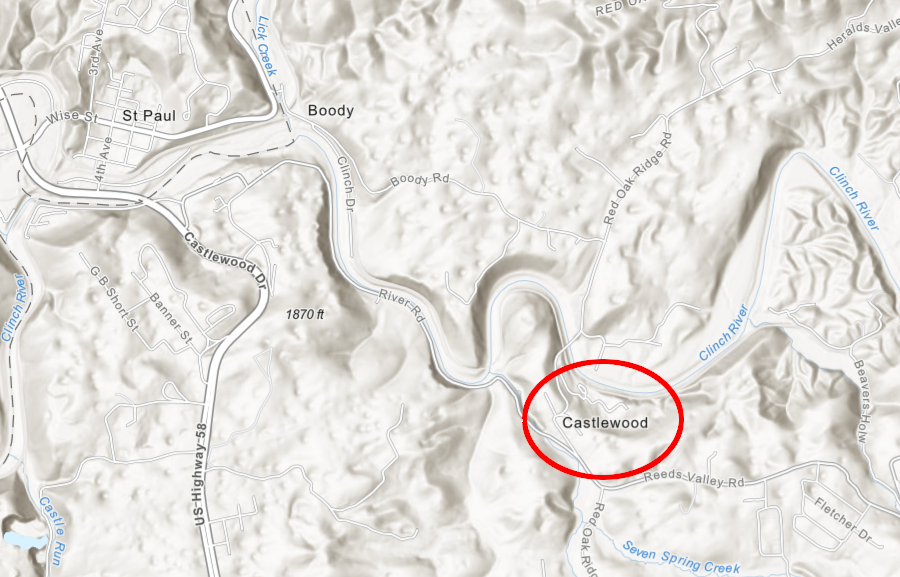
Castlewood was an incorporated town for just six years
Source: ESRI, ArcGIS Online
Clover, in Halifax County, was the second town in Virginia to revert to being an unincorporated community. Clover had incorporated in 1895. When Henrietta Lacks grew up there, it was a sleepy and traditionally-segregated place in Southside Virginia:2
Clover residents had hoped that construction of the coal-fired Clover Power Station in 1995 would revitalize the town. The power plant was outside the town boundaries, so the facility did not boost property taxes to support town services.
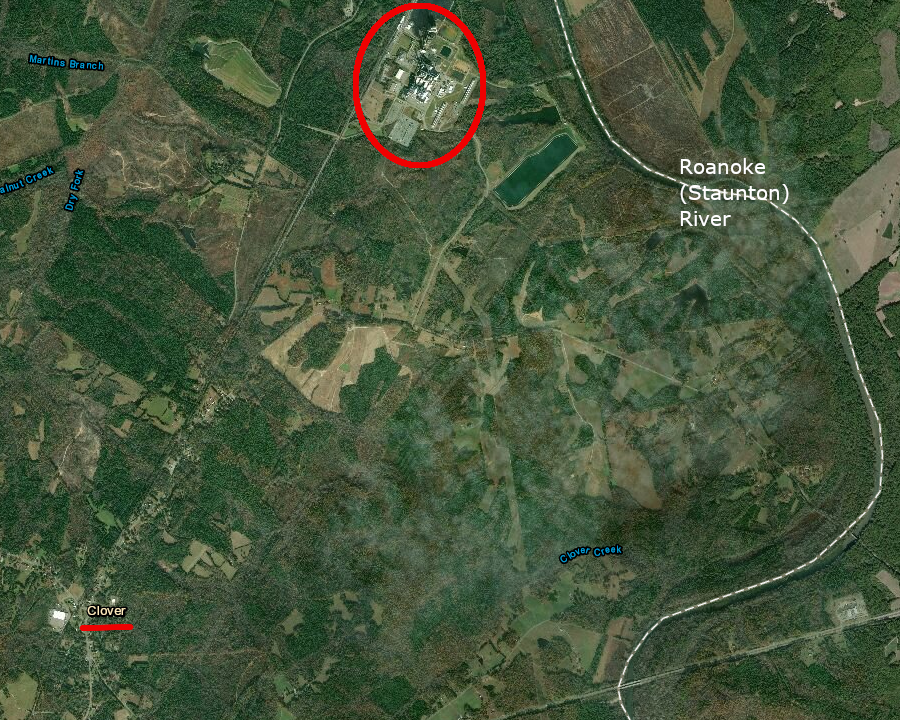
because the new power plant was two miles outside the boundaries of the town, it paid no property taxes to Clover
Source: ESRI, ArcGIS Online
The Old Dominion Electric Power Cooperative (ODEC) brought in workers from outside the town to build the plant. The economic benefits from construction were short-lived; when the project was completed, the temporary jobs disappeared and the construction workers left the area.
There were few local businesses to pay the extra property taxes required to pay for town services, so local landowners carried the tax burden. In 1998, residents agreed to dissolve the town and become an unincorporated area within Halifax County. One resident summed up the end of the town:3

the Town of Clover was located just west of the Roanoke (Staunton) River, until it unincorporated in 1998
Source: US Geological Survey (USGS), Clover 1:24,000 topographic quadrangle map (1968)
Columbia in Fluvanna County relinquished its charter and become just an unincorporated part of Fluvanna County in 2016.
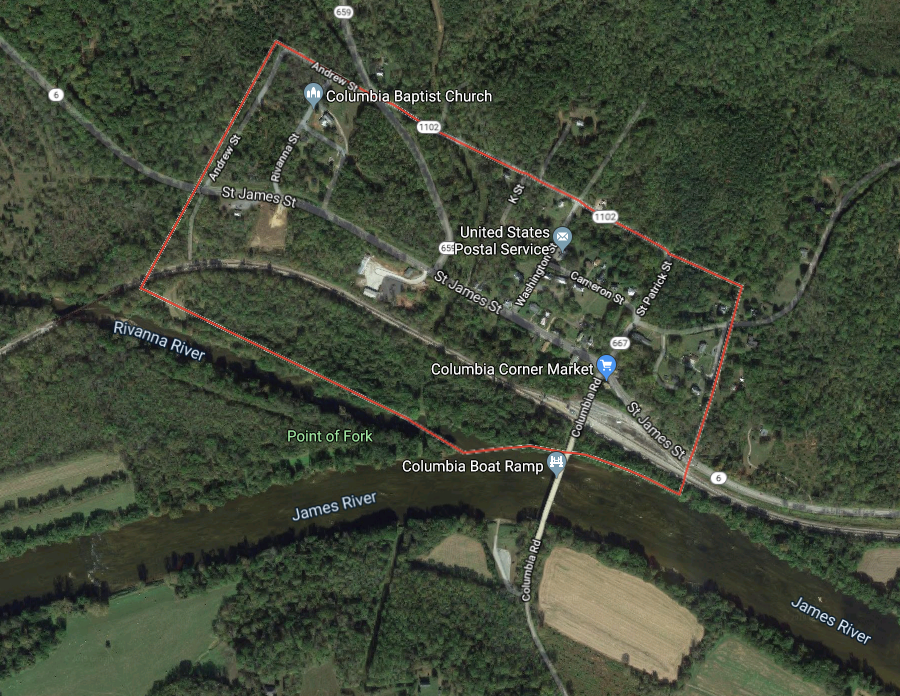
the Town of Columbia survived from 1788 until 2016
Source: GoogleMaps

Columbia was once an active port on the James River and Kanawha Canal
Source: Library of Congress, Central Virginia (1864)
Business activity had declined after Chesapeake and Ohio Railroad passenger trains quit stopping in Columbia in 1958, and then I-64 bypassed the town in the 1960's. Hurricane Camille in 1969, Hurricane Agnes in 1972, and Hurricane Juan in 1985 caused major floods that severely damaged numerous buildings.
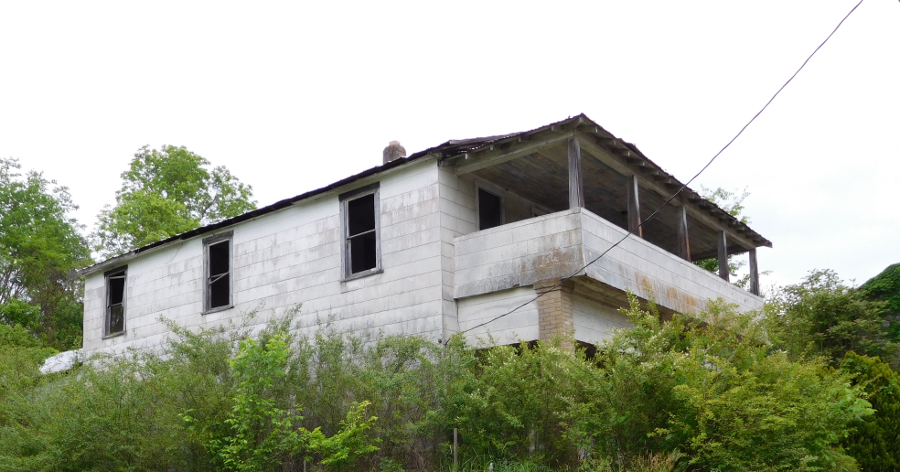
by 2016, several structures in Columbia were dilapidated
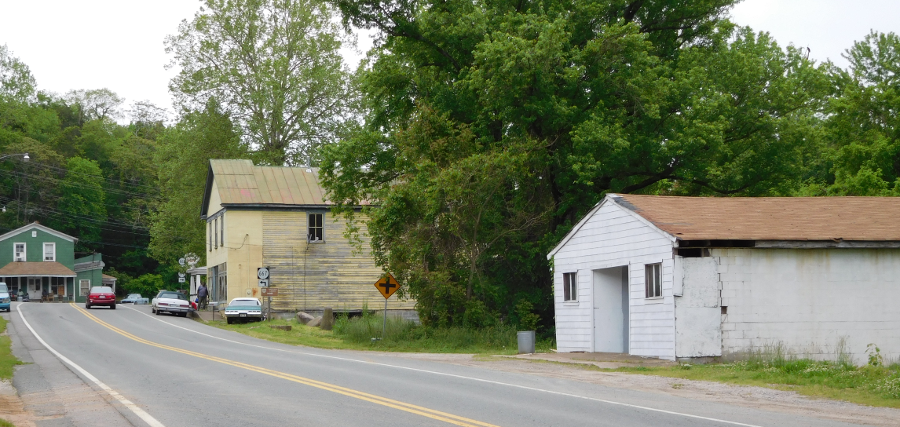
Columbia in 2016
The town's tax base deteriorated, annual tax revenues dropped to below $4,000 per year, and outdated land use ordinances made the town vulnerable to uncontrolled and inappropriate development. The vote in November, 2015 to relinquish the town charter was 18-1 in favor of abandoning the status as a town. A consensus had emerged that the cost was too high to maintain a legally-separate town government with insurance for town hall and a requirement to update ordinances:4
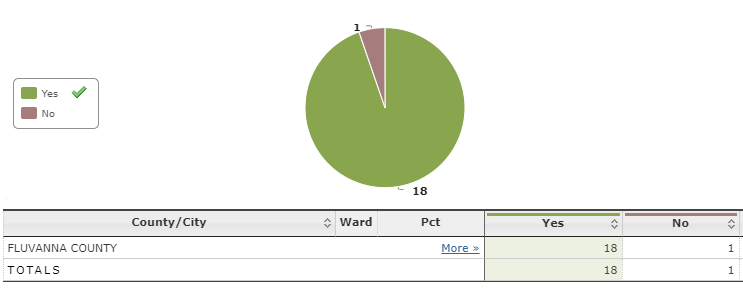
the vote in 2015 was 18-1 in favor of ending the status of Columbia as a town
Source: GoogleMaps
The Town of Brookneal has considered abandoning its charter and becoming an unincorporated community within Campbell County. In 2019, Residents for a Better Brookneal questioned if the town still had the tax base to support independent town services for water, sewer, and solid waste management.
Their plan was to get 100 registered voters to sign a petition for making the town just an unincorporated part of Campbell County. The petition would be submitted to the town council, but also to the Campbell County Circuit Court in case the council took no action.
The Code of Virginia does not allow citizens the right to place a measure on the ballot for a statewide vote (initiative) after collecting enough signatures, but does allow initiative at the local level for town consolidation with a county. If 15% of registered voters in the town, or at least 100 voters, file a petition with the local circuit court(s), then the judges can appoint a committee to organize a referendum even if the town council has not taken action. The town of 1,250 residents had 659 registered voters, so the petition needed 100 signatures.
Brookneal was incorporated as a town in 1802, at a ferry crossing over the Roanoke River. The Dismal Swamp Canal was nearing completion, and batteaux could carry crops down the river to Portsmouth and Norfolk. Roughly three decades later, the Roanoke River Canal at Weldon was completed, and railroads provided outlets for Roanoke River crops to Petersburg, Portsmouth, and Wilmington. Brookneal's future was assured when the Lynchburg and Durham Railroad built track through the town in 1887.
If the town abandoned its charter, Campbell County would become responsible for land use planning as well as providing utility services for all the residents. Altavista would become the only incorporated town remaining in Campbell County.5
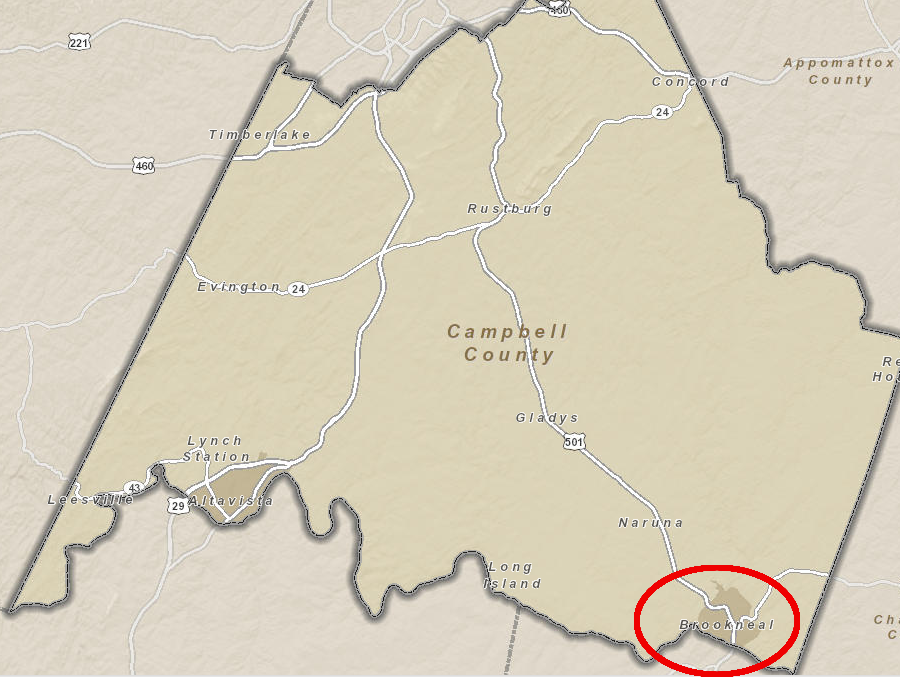
the Town of Brookneal was on the Roanoke (Staunton) River
Source: Campbell County, Parcel Data Viewer
Consolidation with Campbell County would end the role of James "Champ" Nowlin as mayor. Mayor Nowlin was elected with 63% of the vote in November 2018.
He was first elected to the town council in 1989, and served as vice mayor for 14 years until Phyllis Campbell retired after being mayor for 20 years. He became the first African-American mayor for Brookneal. If the town had consolidated with the county, he would have become the last mayor.6

James "Champ" Nowlin was elected as potentially the last mayor of Brookneal in 2018
Source: Virginia Department of Elections, 2018 November General
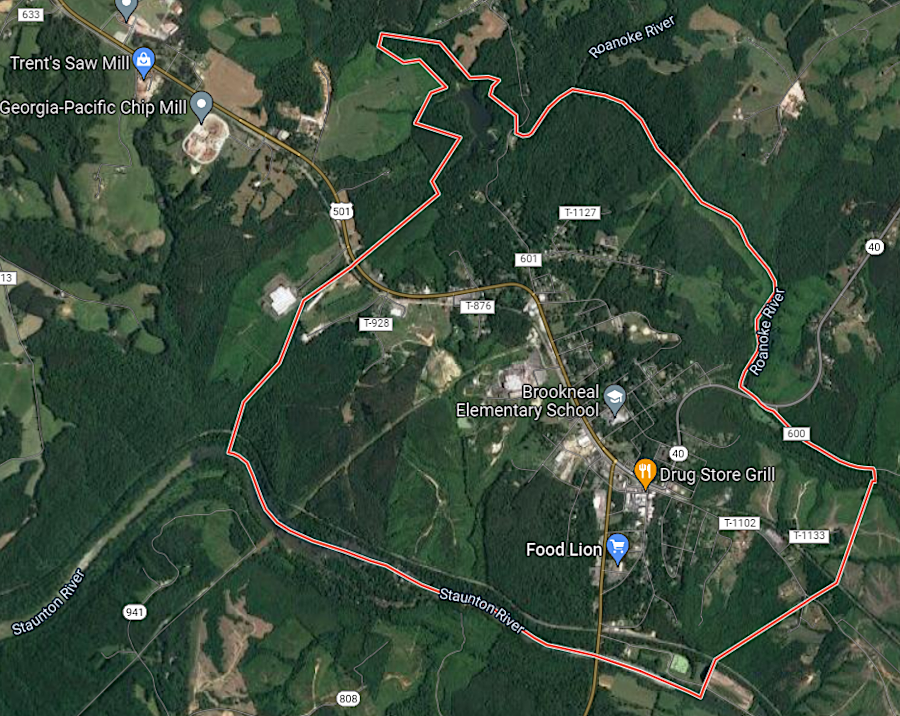
the Town of Brookneal is located near the junction of the Falling River (mislabeled as "Roanoke River" in GoogleMaps in 2022) and the Staunton/Roanoke River
Source: GoogleMaps
In 2021, the Town Council of Mineral considered dropping its charter. The Louisa County town had started as Tolersville in 1890, but chose the name Mineral when incorporating in 1902. The town was not in debt; there was no urgency to consolidate with the county. However, a 3-2 majority of the Town Council voted to start the discussion with Louisa County because the value of staying as a town and paying extra town taxes was not clear. Mineral's only unique service was to contract for trash pickup services for all residents. The town's water system was already dependent upon water from the Louisa County Water Authority.
One member of Town Council stated:7
After feedback from residents in Mineral, members of Town Council quickly ended their exploration of cancelling the charter. The council unanimously passed a motion to rescind its earlier vote to initiate dropping the charter. However, one of the advocates in that earlier vote still commented:8
At the same time, Crozet residents considered becoming a new town. Albemarle County began updating the Crozet Master Plan in 2019. By 2021, dissatisfaction with the draft led to proposals for Crozet to gain control over local land use planning by becoming a town. At the time, Scottsville was the only town within Albemarle County.
Residents would still pay taxes and vote for Albemarle County officials, but creating a town would shift planning and zoning responsibilities to a Crozet Town Council. That could block the county from designating any areas within town boundaries for Middle Density Residential, a category which could result in housing density as high as 18 units/acre.9
In 2022, the towns of Pound and St. Charles were on track to lose their charters. The decline of coal severance tax revenue stressed the ability to maintain town services. Census statistics document population decline since 'coal was king" in 1950. The number of people living in Pound declined from 1,118 in 1950 to 877 in 2020. Coal mining was mechanized and the total demand dropped. In addition, completion of the US 23 bypass around town in the 1960's reduced the opportunity for travelers to eat and shop in town, and adjacent Kentucky counties began to allow local alcohol sales.10
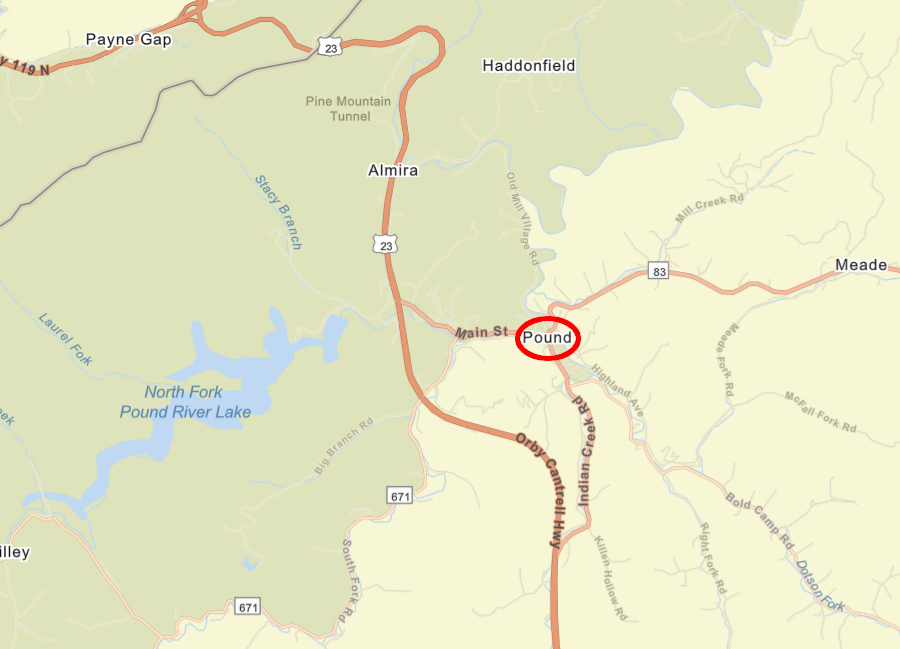
Route 23 now bypasses the Town of Pound
Source: ESRI, ArcGIS Online
St. Charles in Lee County had been created in 1914 by order of the Circuit Court. It was one of 37 Virginia towns created by the judiciary rather than through the General Assembly. In 1914, there were 300 residents and it was clear the mining community was growing. In the 1950 Census, there were 550 residents.
Residents prepared to relinquish the charter because population had declined 43% since 2010. In 2020, there were only 73 people living within the boundaries of St. Charles.
The only two businesses left in town in 2022 were the St. Charles Community Health Clinic and an adjacent black lung clinic. In the 2016 election for town council, Only 47 ballots were cast for the six seats. In the race for mayor, the winner got eight votes. However, no one sworn into office. In 2018 and 2020, no one ran for any seats and no one cast a write-in ballot.
No officials were in place to receive revenue due to the town from sales and utility taxes. No taxes were collected because there were no town officials, and the utility turned off the street lights after no one paid electricity bills for two years. The obvious solution was to dissolve the Town of St. Charles and make it an unincorporated part of Lee County again. The General Assembly passed legislation in 2022 (SB 589 and HB 83) to terminate the charter, specifying that:11
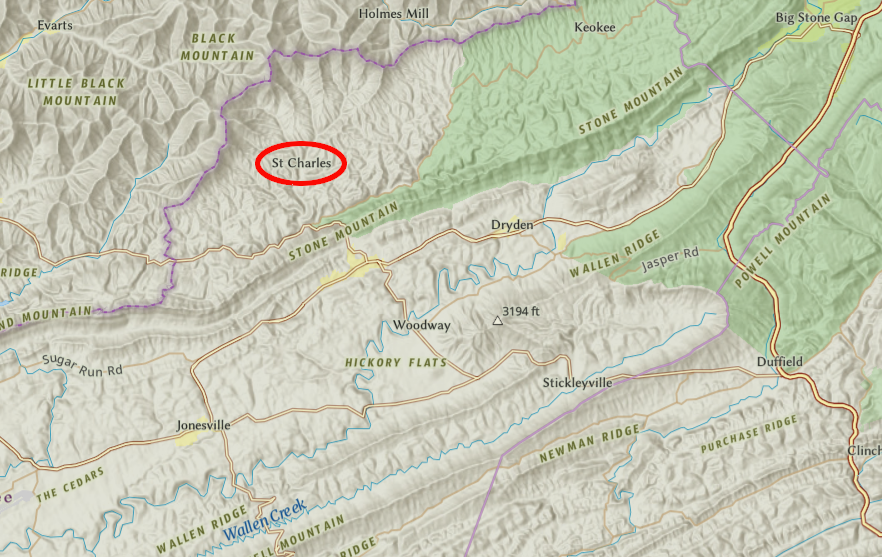
the population in the Town of St. Charles declined as the production of coal dropped
Source: ESRI, ArcGIS Online
The 2022 General Assembly considered revoking the charter of the Town of Pound in Wise County. The once-thriving town, chartered in 1950, could no longer rely upon regional coal mining operations to generate adequate revenue. Taxes were not being collected, bills were not being paid, public feuding between elected officials and with appointed staff was constant, and so many members of Town Council resigned that it lacked a quorum to vote.
However, by 2024 new leaders were tackling the many problems. The challenges remained daunting, but the General Assembly threat to abolish the town faded.12
Residents of Glen Lyn in Giles County voted on December 9, 2024 in a special referendum to abolish the town government. The town had gone by that name since 1883, after previously being known as Montreal (named by the first settler in 1780), Mouth of East (it is near the East River), and Hell's Gate. The current name was established after the Norfolk and Western Railroad built its track along the New River. According to the town's website:13
The power plant closed in 2015, reducing tax revenues for the town by 25%. In 2024 there were 100 residents in Glen Lyn. The major employer was is Forensic Computers Inc., which produced specialized computer terminals for intelligence agencies.
The town mayor, who had served in that role for the last 40 years and operated as the town manager as well, was indicted in 2023 by the US Government for ordering the Glen Creek Wastewater Treatment Plant to discharge raw sewage into the East River. The Volunteer Fire Department was dissolved in 2023, after allegations of improper conduct. The dissolution of the town transferred to Giles County the municipal assets, such as the town's share in the $7 million wastewater treatment plant, Glen Lyn Park on the New River, and the fire department's building and vehicles. Glen Lyn had no debt, and town reserves were transferred to a non-profit to fund annual costs for street lights and snow removal.
There was just one candidate for mayor listed on the ballot in the November 5, 2024 election; the indicted mayor chose not to run and supported abolishing the town. The candidate listed on the ballot was an advocate for retaining the town charter. He received 11 votes, but a write-in candidate (a town councilman) won with 17 votes.
That election was a precursor to the vote on the referendum, and the elected mayor never got an opportunity to serve. The vote to dissolve the town was 21-7.14
Scottsville, a town in both in Albemarle and Fluvanna counties, has struggled to attract residents willing to serve on town council. The position is unpaid and the volunteer hours can be long. Between 2006-2024, the number of candidates on the ballot was less than the number of seats to be filled. Write-in candidates were chosen to fill the gap. Other town organizations had difficulty in attracting volunteers; the Scottsville Lions Club dissolved in 2025 when it had just five remaining members.
In the 2024 election for mayor in Scottsville, there were two candidates who were friendly rivals. In that race, the vote was close enough to almost qualify for a state-funded recount. However, there were two open seats on Town Council and only one official candidate. The candidate on the ballot was elected with 116 votes, and a write-in candidate won the other seat with just 57 votes. Town leaders acknowledge that one future option is to dissolve the town government.15
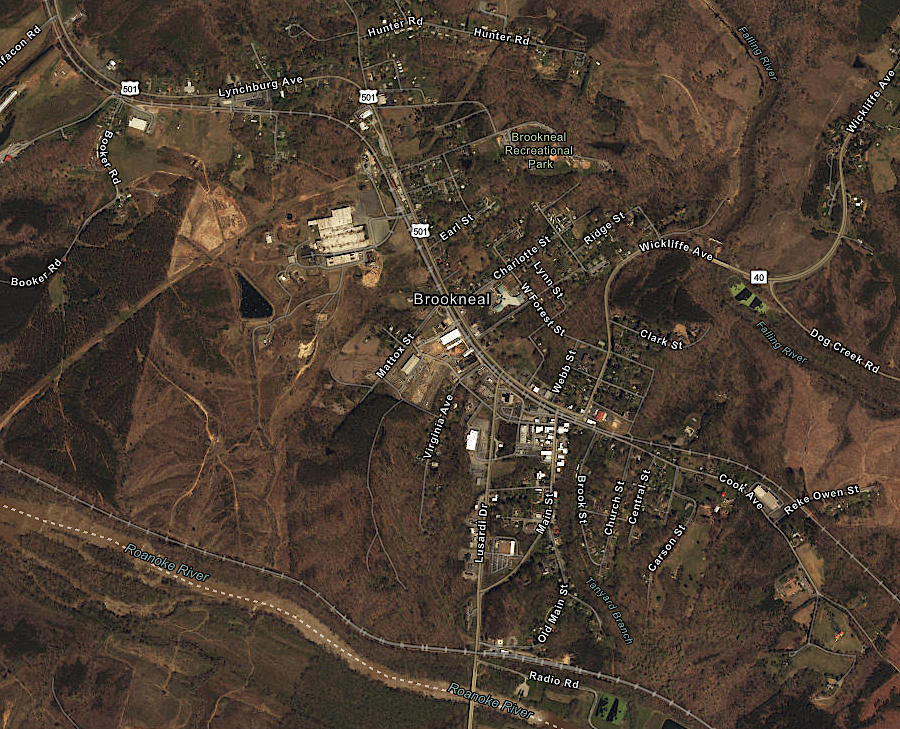
the Town of Brookneal evolved at a ferry crossing over the Roanoke River
Source: ESRI, ArcGIS Online